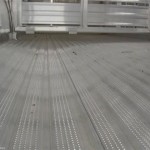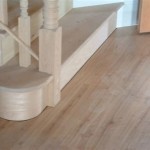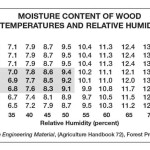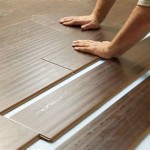Alloc Laminate Flooring: A Comprehensive Overview
Alloc laminate flooring, renowned for its durability and aesthetics, represents a significant advancement in flooring technology. This article provides a detailed exploration of Alloc laminate flooring, encompassing its construction, characteristics, advantages, disadvantages, installation methods, and maintenance procedures. Understanding these aspects allows homeowners and contractors to make informed decisions regarding flooring choices.
Alloc, a brand known for its high-quality laminate flooring, pioneered several innovations in the industry. The brand's commitment to durability and design has made it a popular choice for both residential and commercial applications. Examining the core features of Alloc laminate flooring helps to appreciate its market position.
Construction and Composition of Alloc Laminate Flooring
Alloc laminate flooring comprises several distinct layers, each contributing to its overall performance and durability. These layers are fused together under high pressure and temperature, resulting in a robust and resilient flooring product. Understanding the function of each layer is crucial to appreciating the flooring’s structural integrity.
The top layer, known as the wear layer, is typically a transparent melamine resin coating. This layer provides resistance to scratches, stains, and fading, ensuring the floor maintains its appearance over time. The thickness and composition of the wear layer are critical determinants of the flooring's overall durability and suitability for different traffic levels.
Beneath the wear layer is the decorative layer, a high-resolution photographic image that simulates the appearance of natural wood, stone, or tile. This layer allows for a wide range of design options, replicating various textures and colors to suit diverse aesthetic preferences. The quality of the image and the printing process contribute significantly to the realism and visual appeal of the flooring.
The core layer, typically made of high-density fiberboard (HDF), provides the flooring with its structural stability and resistance to indentation. HDF is a composite material engineered from wood fibers and resin, compressed under high pressure to achieve exceptional density and strength. The density of the HDF core directly impacts the flooring's ability to withstand heavy loads and resist moisture penetration.
The bottom layer, often referred to as the balancing layer, is designed to provide stability and prevent warping. This layer usually consists of a melamine-impregnated paper that counteracts the stresses exerted by the other layers, ensuring the flooring remains flat and stable over time. The quality of the balancing layer is essential for maintaining the flooring's dimensional stability and preventing issues such as cupping or buckling.
Some Alloc laminate flooring products also incorporate an attached underlayment. This feature simplifies installation by providing a cushioning layer that reduces noise transmission and enhances comfort underfoot. The underlayment also helps to smooth out minor subfloor imperfections, improving the overall performance of the flooring system.
Advantages of Choosing Alloc Laminate Flooring
Alloc laminate flooring offers numerous advantages over other flooring options, contributing to its widespread popularity. These benefits encompass durability, aesthetics, ease of installation, and cost-effectiveness. Evaluating these advantages helps in understanding the appeal of Alloc laminate flooring.
Alloc laminate flooring is exceptionally durable, capable of withstanding heavy foot traffic and resisting scratches, stains, and fading. The robust wear layer protects the flooring from everyday wear and tear, ensuring its longevity in high-traffic areas. This durability makes Alloc laminate flooring suitable for both residential and commercial applications.
The wide variety of designs and styles available in Alloc laminate flooring allows homeowners to achieve a desired aesthetic without the cost and maintenance associated with natural materials. The high-resolution photographic image layer accurately replicates the appearance of wood, stone, and tile, offering a realistic and visually appealing alternative. This design flexibility enables homeowners to create a customized look that complements their interior décor.
Alloc laminate flooring is often engineered with user-friendly installation systems, such as click-lock mechanisms, which simplify the installation process. These systems allow for a floating floor installation, eliminating the need for adhesives or nails. This ease of installation reduces labor costs and allows for faster project completion times.
Compared to hardwood, stone, or tile flooring, Alloc laminate flooring is generally more cost-effective. The lower material costs and reduced installation expenses make it an attractive option for budget-conscious homeowners. This affordability, combined with its durability and aesthetics, makes Alloc laminate flooring a compelling value proposition.
Alloc laminate flooring is relatively easy to maintain, requiring only regular sweeping or vacuuming to remove dirt and debris. Occasional damp mopping with a specialized laminate floor cleaner is sufficient to keep the flooring looking its best. The stain-resistant properties of the wear layer also simplify the cleaning process.
Many Alloc laminate flooring products are environmentally friendly, made from sustainable materials and manufactured using eco-friendly processes. This focus on sustainability appeals to environmentally conscious consumers who seek flooring options with a reduced environmental impact. The use of recycled content and responsible sourcing of materials further enhances the environmental credentials of Alloc laminate flooring.
Potential Drawbacks and Considerations
While Alloc laminate flooring offers numerous benefits, it also has certain potential drawbacks that should be considered before making a purchasing decision. These considerations include moisture resistance, sound absorption, and repair limitations. Addressing these drawbacks helps to ensure a well-informed decision.
Although Alloc laminate flooring is generally water-resistant, it is not completely waterproof. Prolonged exposure to standing water can cause the HDF core to swell and warp, leading to irreversible damage. Therefore, it is essential to promptly clean up spills and avoid installing laminate flooring in areas prone to excessive moisture, such as bathrooms and laundry rooms, unless specifically designed for wet environments.
Compared to carpet or hardwood flooring, Alloc laminate flooring can be noisier underfoot. Footsteps and other sounds can be amplified by the hard surface, potentially creating a less comfortable living environment. However, this issue can be mitigated by installing a high-quality underlayment that provides sound insulation and reduces noise transmission.
Damaged Alloc laminate flooring planks can be difficult to repair. While minor scratches can sometimes be concealed with touch-up kits, more significant damage may require replacing the affected planks. This can be challenging if the original flooring pattern is discontinued or if the replacement planks do not match the existing flooring precisely. Maintaining a supply of spare planks can help to address this issue.
Alloc laminate flooring may not add as much resale value to a home as natural hardwood flooring. While it is a durable and aesthetically pleasing option, some homebuyers may still prefer the perceived value and prestige of hardwood floors. This consideration is particularly relevant for homeowners who plan to sell their homes in the near future.
The quality of Alloc laminate flooring can vary depending on the specific product line and price point. Lower-quality laminates may have a thinner wear layer, a less dense core, and a less realistic appearance. Therefore, it is important to carefully evaluate the specifications and features of different Alloc laminate flooring products before making a purchase. Selecting a higher-quality laminate will ensure greater durability and longevity.
The perceived hardness of laminate flooring can sometimes be uncomfortable for some individuals, particularly those with joint problems or mobility issues. The lack of cushioning can exacerbate discomfort and fatigue. Using area rugs or installing a thicker underlayment can help to address this issue and improve comfort underfoot.
Alloc laminate flooring, like any flooring material, is subject to expansion and contraction due to changes in temperature and humidity. This movement can lead to gaps along the edges of the flooring if proper expansion gaps are not provided during installation. Following the manufacturer's instructions regarding expansion gaps is essential for preventing issues such as buckling or warping.
The installation of Alloc laminate flooring requires a level and stable subfloor. Uneven or damaged subfloors can cause the flooring to flex and wear unevenly, leading to premature failure. Addressing any subfloor issues before installation is crucial for ensuring the long-term performance of the flooring system. This may involve leveling the subfloor with self-leveling compound or repairing any cracks or damage.

Alloc 243513 Domestic 7 6 X 47 71 Traditional Oak Build Com

Berry Alloc Laminate Flooring Concord Ca San Ramon

Herringbone Laminate Floors

Berryalloc Laminate Ocean Range The Wooden Floor

Laminate Flooring Alloc

Berryalloc Laminate Ocean Range The Wooden Floor

Berry Alloc Laminate Flooring Concord Ca San Ramon

Alloc 644531 Original 7 6 X 47 5 Antique Oak Laminate Build Com

Berry Alloc Laminate Flooring Concord Ca San Ramon

Trendline Laminate Floors
Related Posts








